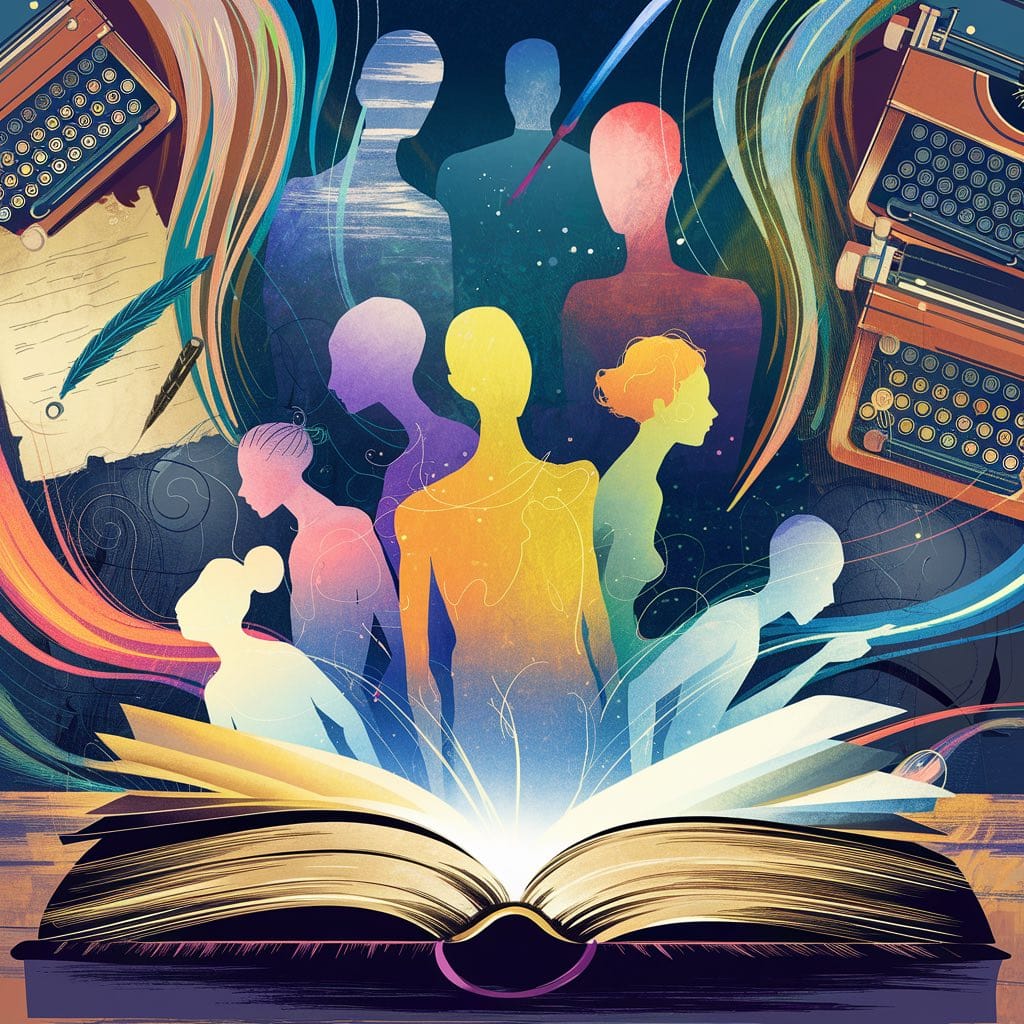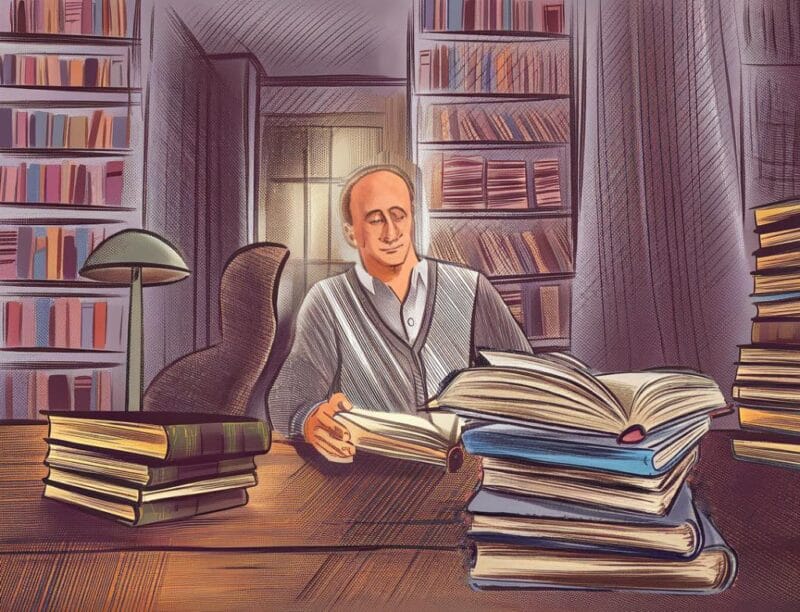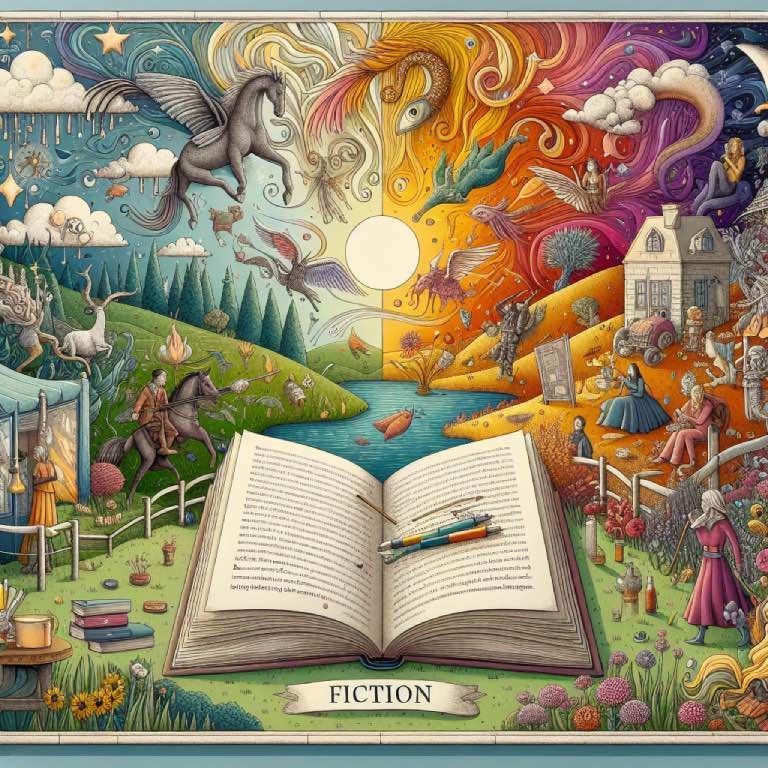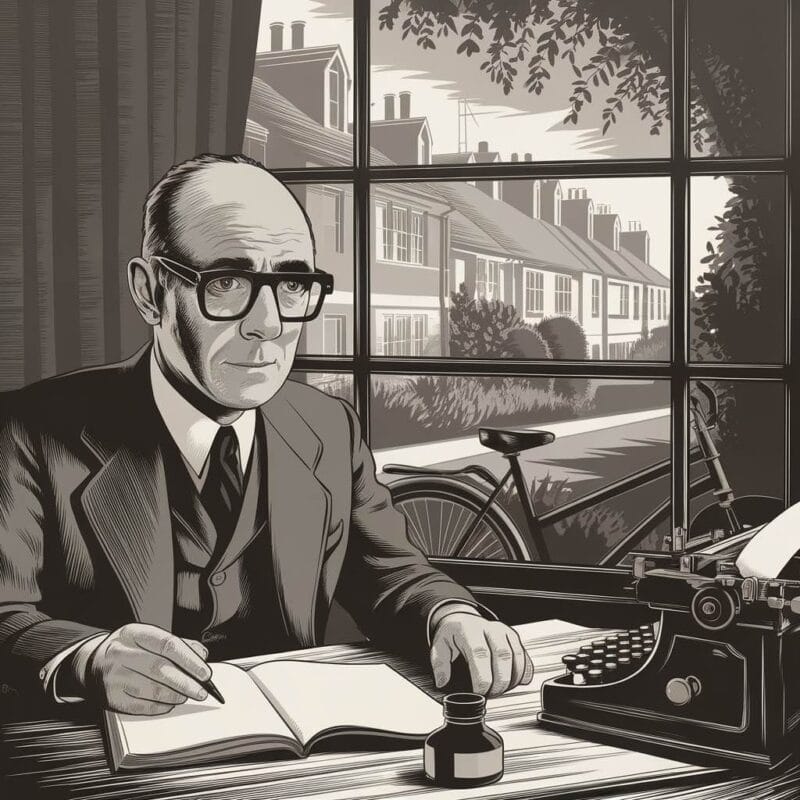- Character development is vital in crafting engaging stories by creating realistic figures who evolve through internal conflicts and external challenges.
- A well-developed backstory and authentic motivations make characters relatable and drive the plot forward.
- Key questions for shaping characters include:
– Who is the character?
– What events shape their beliefs and values?
– How do internal struggles and external obstacles influence their evolution? - Common character arcs include:
– Moral ascending
– Moral descending
– Transformational
– Flat - By addressing these elements, writers create figures that not only propel the story but also resonate with audiences long after the final scene.
Character creation remains one of the most rewarding challenges in writing. The process of shaping characters who feel genuine and multifaceted can transform an ordinary story into one that stays with its audience long after the final page is turned. A well-crafted character can drive the entire story and reveal that character’s struggles, hopes, and inner life.
In this article, we examine what character development entails, its role in storytelling, and practical methods for creating fascinating characters who evolve over time. We will explore how internal dilemmas, external challenges, and the choices a character makes all contribute to a journey of change.
Along the way, we will reference notable examples from literature and films to illustrate critical points. Whether you are an emerging writer or an experienced storyteller looking to refine your craft, these key questions and strategies will serve as a guide to creating characters with genuine appeal to a wide range of readers.
What is character development?

Character development describes the progression of a person within a story. It tracks how that person changes through a series of events, decisions, and interactions with others. Often, a character begins with specific flaws, desires, or misconceptions that are gradually reexamined as the story unfolds. Their transformation may involve overcoming internal battles or adjusting to external pressures.
A character’s evolution is not just about a shift in behavior but also about uncovering hidden aspects of personality and discovering the forces that have shaped them. Consider a character on a quest, determined to resolve a secret from their past. Their journey is about reconciling their long-held differences as much as it is about external adventure. Through each decision and setback, the character’s arc becomes richer, and their evolution more apparent.
When readers follow a character’s progress, they witness a process of change that mimics real-life trials and triumphs. The quality of this progression often determines whether the reader can sympathize with the character. Successful character development depends on a careful balance between defining personal traits and allowing room for evolution. In many ways, the success of the overall story rests on how effectively the character’s inner workings are manifested.
The Importance of Character Development in Storytelling

Characters form the backbone of any good story. They serve as vessels through which ideas are explored and conflicts are confronted. Instead of merely presenting a sequence of events, a story enriched by thoughtful character evolution offers a perspective on challenges and victories that touch upon universal aspects of life.
By designing characters with distinct backstories, ambitions, and internal conflicts, writers build a connection that lets the audience invest in the unfolding events. When a character’s decisions carry the weight of their past experiences, the outcome of each conflict becomes more significant. For instance, a character who once faced harsh treatment may react differently when confronted by authority, making every choice feel personal and earned.
A well-constructed backstory explains why a character behaves as they do today. It adds context and explains the origin of their traits, habits, and fears. When we learn that a miser’s reluctance to share stems from a history of deprivation, the ensuing transformation toward generosity carries a satisfying quality. The journey from bitterness to kindness is not presented as a sudden shift but as the natural outcome of confronting past pain.
Moreover, the interplay between a character’s internal dilemmas and external obstacles enriches the overall story. Whether they are clashing with a rival or struggling to reconcile inner conflicts, every decision contributes to the character’s overall trajectory. The tension between conflicting desires often provides the energy needed to propel the plot forward. Ultimately, when a character faces challenges that force them to change, the entire work becomes more engaging.
Understanding Character Arcs

A character arc is a structured progression that a character experiences throughout a story. Think of it as a roadmap that outlines key turning points and moments of change. An effective arc highlights the contrast between who the character is at the beginning and who they become by the end.
The beginning of the story might show the character as defined by certain shortcomings or misguided ambitions. As events unfold, new experiences and interactions gradually unsettle those initial traits. The character might suffer a setback that challenges their self-image or a success that inspires them to reach beyond previous limitations. In either case, the shift is usually gradual and carefully paced, so the final transformation feels earned rather than contrived.
Each turning point in a character’s journey can be tied to specific incidents—moments that force them to confront the discrepancy between their self-image and their actions. For example, a stubborn hero might be forced to work alongside an adversary, which leads them to question long-held beliefs. This internal struggle is mirrored by external challenges that compound the tension. The more convincingly a character grapples with these contradictions, the more authentic their evolution appears.
In planning a character arc, writers must consider how each phase contributes to the overall journey. There should be a balance between moments of challenge and opportunities for renewal. The changes in mindset and behavior should appear as inevitable outcomes of the unfolding events. This careful planning ensures that when the character finally arrives at a new understanding of themselves, the change is both believable and moving.
Types of Character Arcs
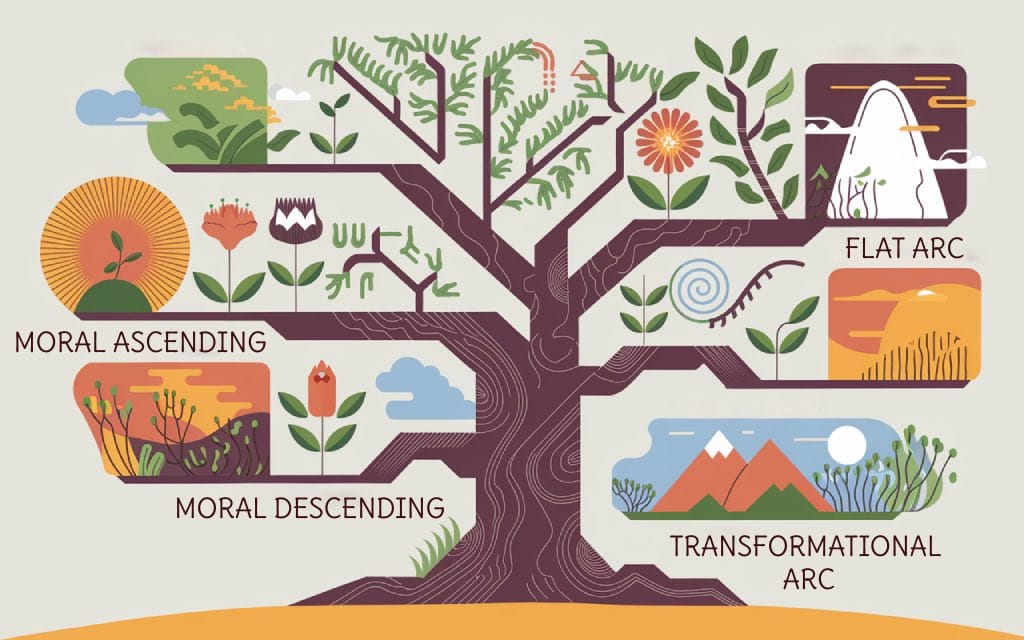
Writers have several options when deciding how a character should evolve. The nature of the character’s transformation can vary widely, and each option provides different opportunities for exploring internal change.
Moral Ascending Arc
A moral ascending arc features a character who begins with significant shortcomings or ethical missteps. Over time, they learn important lessons and make choices that ultimately refine their character. Consider Ebenezer Scrooge in Charles Dickens’ A Christmas Carol (1843). Scrooge starts as a cold-hearted miser, but through encounters with figures from his past and present, he gradually shifts toward generosity and compassion. The journey from selfishness to benevolence demonstrates that transformation is possible, even for those who seem irredeemable at first.
Moral Descending Arc
In contrast, a moral descending arc follows a character’s decline into self-destruction or corruption. This path involves a gradual abandonment of previously held values. The transformation is depicted not as a correction but as a slide into negative behavior. A classic example is Macbeth in William Shakespeare’s Macbeth (1606), whose misaligned priorities lead him to commit ever-more terrible acts. His descent highlights how unmitigated desire can ultimately lead to ruin.
Transformational Arc
A transformational arc centers on a character who faces overwhelming external and internal pressures, resulting in a dramatic shift. This change is often marked by a profound reordering of priorities or beliefs. For instance, the evolution seen in J.K. Rowling’s Harry Potter and the Sorcerer’s Stone (1997) shows a young wizard gradually coming to terms with his responsibilities and the weight of the world around him. His journey reflects a broader shift from innocence to a more complex understanding of right and wrong.
Flat Arc
A flat arc occurs when a character remains largely the same internally, despite the changes around them. Instead of undergoing significant personal transformation, the character serves as a catalyst for change in others. Atticus Finch in Harper Lee’s To Kill a Mockingbird (1960) exemplifies this type of arc. His steadfast beliefs and unwavering integrity influence those around him, inspiring growth in secondary figures even as he remains a model of consistency.
Each type of arc has its own strengths and challenges. While moral ascending arcs can offer redemption and hope, moral descending arcs serve as cautionary tales. Transformational arcs bring the shock of sudden change, and flat arcs provide a stable center around which other characters revolve. Choosing the right arc for a given character depends on the story’s overall goals and the themes the writer wishes to explore.
Elements of Effective Character Development
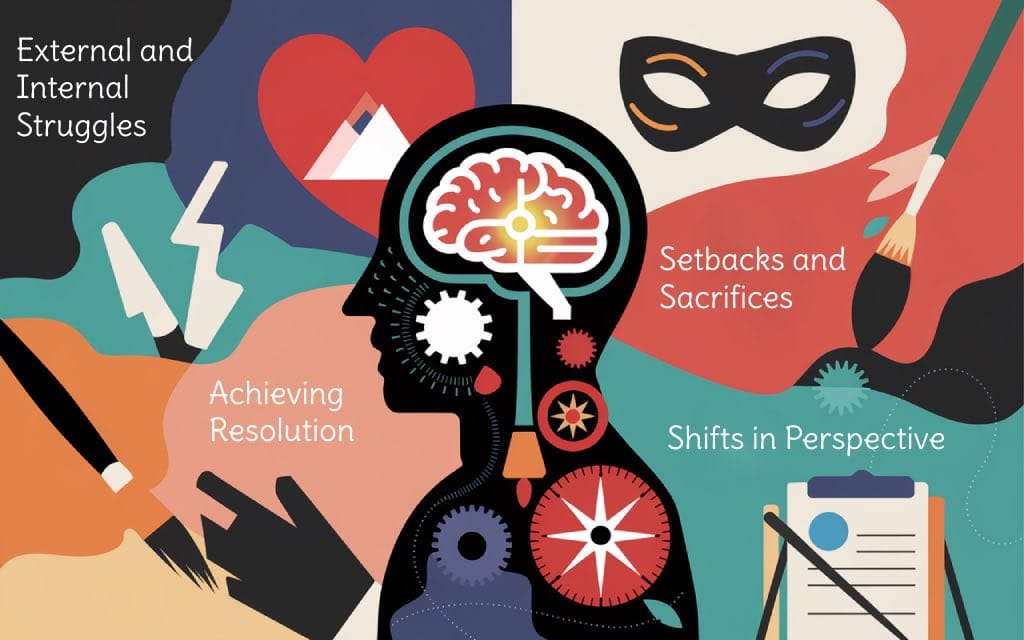
Crafting characters who truly feel alive on the page involves careful attention to several key elements. These components work together to create characters who are both relatable and memorable.
External and Internal Struggles
A character’s journey becomes richer when they must contend with obstacles both outside and within themselves. External challenges might include conflicts with other characters, social pressures, or physical dangers. Internal struggles, however, involve battles with self-doubt, guilt, or conflicting desires. For example, a character who appears outwardly confident might secretly wrestle with feelings of inadequacy. The interplay between what is visible and what remains hidden offers a dynamic quality that can drive the story forward.
Setbacks and Sacrifices
Difficulties in a character’s journey often reveal the true nature of their spirit. When faced with obstacles, characters may need to make sacrifices that reshape their priorities. Such setbacks test their determination and force them to reconsider their goals. In Jane Austen’s Pride and Prejudice (1813), the protagonist’s quest for love encounters numerous hindrances. Each challenge forces the character to adapt and reconsider what is truly important, adding a rich texture to their path of change.
Shifts in Perspective
A change in viewpoint is one of the most effective tools in character development. New experiences, interactions, or realizations can lead a character to reconsider long-held beliefs. This evolution may be gradual or sparked by a single, defining moment. A shift in perspective not only alters the character’s actions but also reshapes their interactions with the world. When a once narrow-minded figure begins to see things in a new light, the resulting transformation offers a satisfying sense of progression.
Achieving Resolution
Every character’s journey eventually reaches a point of resolution. This does not necessarily mean a happy ending; rather, it signifies a conclusion that feels authentic to the path taken. A well-resolved character arc might involve accepting one’s imperfections, reconciling with past mistakes, or even embracing a new way of living. The resolution should reflect the entirety of the journey and provide a sense of closure, whether it leads to redemption, understanding, or even a tragic downfall.
Steps to Develop Characters
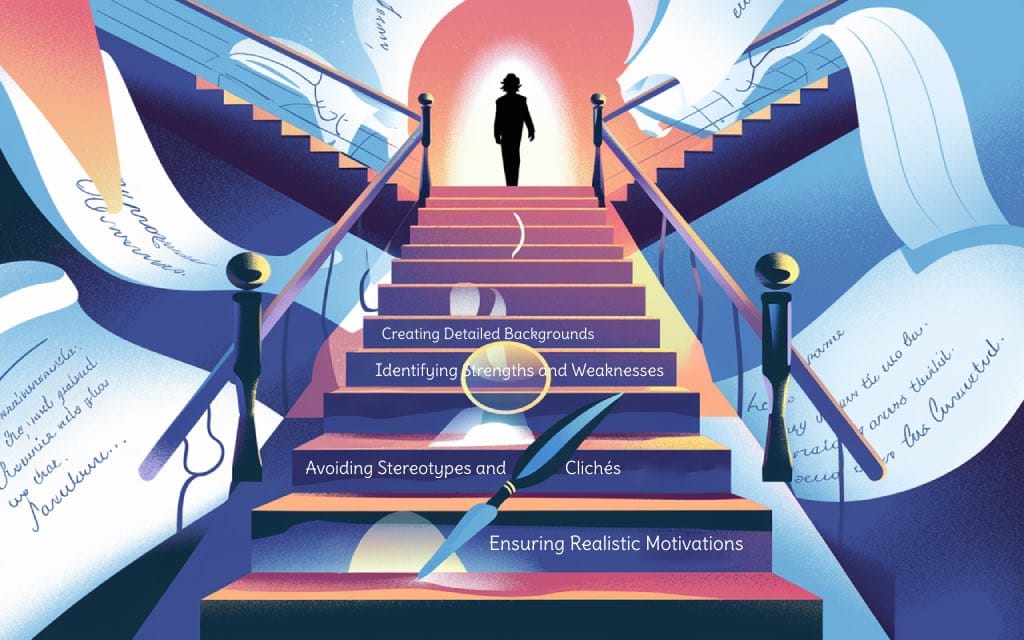
The process of developing a character is both systematic and creative. Below are several steps that can help writers design individuals who are complex and realistic.
Creating Detailed Backgrounds
Begin by constructing a comprehensive backstory for each character. This involves more than just listing their birth date or occupation; it requires an exploration of the events, relationships, and experiences that have shaped them. Consider how childhood, family dynamics, and formative years contribute to a character’s present-day behavior. A well-crafted background can explain why a character makes certain decisions and reacts in particular ways. For example, a figure who grew up in a troubled environment may exhibit guarded behavior and an acute sensitivity to betrayal.
Identifying Strengths and Weaknesses
A balanced character has both admirable qualities and notable shortcomings. Enumerate the traits that define your character, such as courage, wit, or compassion, alongside vulnerabilities like insecurity or stubbornness. These contrasts create tension and provide opportunities for transformation. A character with admirable determination might also struggle with impulsiveness, leading to moments of both triumph and error. Recognizing these facets ensures that the individual remains neither wholly perfect nor entirely flawed.
Avoiding Stereotypes and Clichés
While familiar archetypes can provide a starting point, relying solely on them risks producing characters that feel flat. Challenge yourself to break away from predictable roles. Instead of resorting to well-worn clichés, consider unique personal details and unexpected motivations that set your character apart. Research diverse experiences and viewpoints to build a figure who is both original and reflective of a wider spectrum of life. A character who surprises the audience through unanticipated choices will feel more authentic and engaging.
Ensuring Realistic Motivations
The reasons behind a character’s actions must be believable. Whether a character is driven by ambition, love, or the need to escape a troubled past, their motivations should connect logically to their personality and background. Think carefully about what your character truly desires and why. Their goals should emerge organically from who they are rather than feeling imposed solely to advance the plot. Realistic motivations give weight to their choices and make every conflict more impactful.
Techniques for Multidimensional Characters

Once you have established the fundamentals of developing characters, you can use several techniques to add further layers of individuality.
Establishing Unique Features
Focus on the details that make your character stand out. This might include specific habits, distinctive speech patterns, or unusual hobbies. Unique features help the character emerge from the page and linger in the audience’s memory. For example, a devoted knight might display an unwavering sense of loyalty while secretly harboring a desire to question authority. Small quirks, like an idiosyncratic way of speaking or an unexpected hobby, can transform a simple character into someone who feels unmistakably original.
Developing Varied Personality Types
A realistic world is populated by individuals with a range of temperaments and worldviews. When constructing a cast, aim to diversify the personalities. Even characters who start with similar goals can diverge dramatically as they encounter different challenges. A hero may evolve from a single-minded crusader into someone who wrestles with internal conflicts about duty versus desire. Such shifts enrich the overall trajectory of the story and prevent any one figure from feeling one-dimensional.
Crafting Distinct Voices
Every character should speak and think in a way that reflects their inner life. Distinct voices in dialogue and internal monologue serve to highlight differences among characters. Consider the vocabulary, rhythm, and tone each character uses. A refined person might favor measured language and formal expressions, while a streetwise individual may opt for colloquial phrasing and quick retorts. This attention to voice not only differentiates characters but also deepens the audience’s perception of who they truly are.
Examples of Character Development Across Media
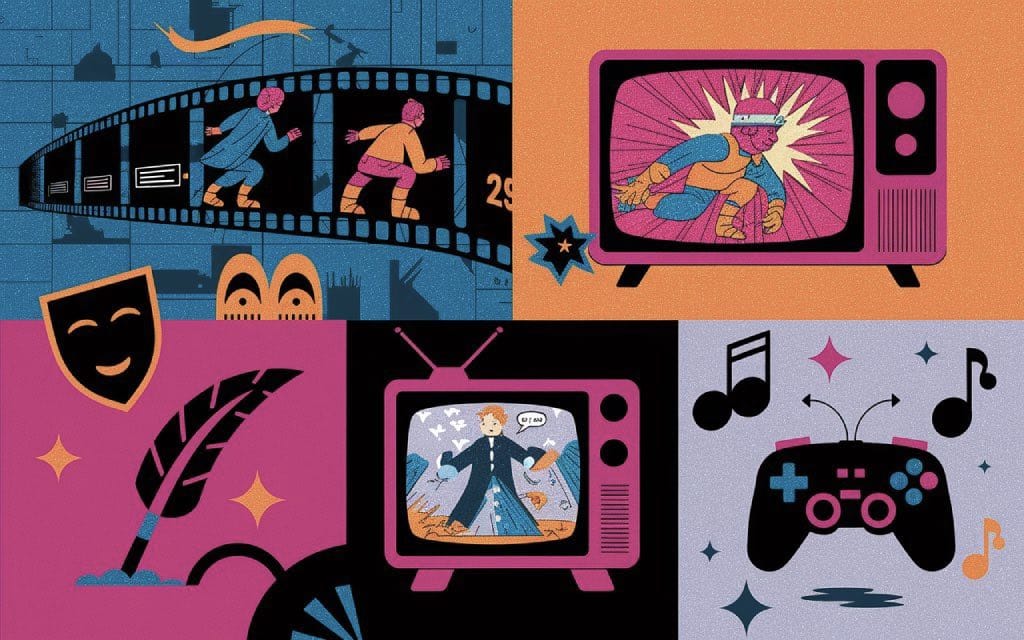
Effective character development is not confined to the written word. Various media offer opportunities to explore individual evolution in unique ways. Below are examples drawn not only from literature but also from film and video games, in order to fully illustrate how well-crafted figures can elevate a story.
Literature Examples
In classic literature, many characters stand out because of the vivid journey they undergo. As mentioned before, Ebenezer Scrooge’s progression from a miserly, isolated man to someone who embraces generosity remains one of the most memorable transformations in writing.
Similarly, Holden Caulfield in J.D. Salinger’s The Catcher in the Rye (1951) presents a figure whose internal struggles and unyielding cynicism evoke both empathy and frustration. His journey through adolescence is depicted with a raw honesty that has resonated with many.
Another notable example is Janie Crawford from Zora Neale Hurston’s Their Eyes Were Watching God (1937). Janie’s progression from a sheltered individual to a self-assured, independent woman highlights the impact of personal experiences and relationships on the evolution of identity.
Film and Television Examples
Moving from the page to the screen, character evolution gains a visual and auditory dimension. In Martin Scorsese’s Taxi Driver (1976), Travis Bickle’s descent into isolation and obsession is conveyed through striking imagery and a haunting score. His internal struggles mirror the external chaos of his environment, resulting in a figure who is as enigmatic as he is memorable.
Meanwhile, Dorothy in Victor Fleming’s The Wizard of Oz (1939) embarks on a journey that challenges her assumptions about bravery, friendship, and the nature of home. As she encounters fantastical obstacles, her gradual maturation adds warmth and substance to an otherwise magical story.
Video Game Examples
Interactive media bring a new level of engagement with character development. In many modern video games, players assume the role of characters who evolve based on choices made throughout the experience. A protagonist might begin the game as uncertain and inexperienced, only to gain determination through a series of trials.
In some games, like adaptations inspired by classic literature or original works in the interactive medium, the character’s evolution is affected not just by scripted events but by decisions that influence their journey. This interactivity makes the character’s evolution feel personal and immediate, as every choice contributes to the unfolding transformation.
Questions to Guide Character Development
Engaging character development often begins with thoughtful questioning. Writers who interrogate their characters—asking about fears, desires, and past experiences—tend to craft figures who are richer and more convincing. Below are several questions that can serve as a starting point:
- What drives your character?
Consider the fundamental forces behind their actions. What are their primary ambitions or long-held dreams? A character might be compelled by a desire for acceptance, the need to prove themselves, or a quest for revenge. Clarifying these motivations sets the stage for meaningful choices later in the story. - What formative experiences shaped their outlook?
Reflect on key moments from the character’s past. Were there significant events that challenged their views on life, relationships, or success? Pinpointing these events can help explain why a character reacts in particular ways when confronted with challenges. - How do they handle conflict?
Conflict comes in many forms—internal debates, confrontations with others, or environmental hardships. How a character navigates these situations can reveal much about their true nature. Consider whether they choose to stand their ground, adapt their methods, or even retreat temporarily to reassess their priorities. - What personal qualities contribute to their strength?
Identify the traits that define your character. Is it their determination, compassion, or wit? These qualities will often be put to the test as the story progresses. At the same time, what weaknesses or vulnerabilities do they carry? A combination of admirable traits and significant flaws creates a figure that audiences find relatable and real. - How do relationships affect their evolution?
Every meaningful connection—whether friendly, romantic, or adversarial—offers an opportunity for change. Ask how interactions with others might challenge or reinforce the character’s beliefs. Relationships often serve as mirrors, reflecting aspects of the character that might otherwise remain hidden. - What is the moment that forces change?
Most characters reach a turning point where the status quo can no longer be maintained. What event or revelation acts as the catalyst for transformation? Recognizing this moment helps structure the overall progression and makes the change feel inevitable rather than arbitrary. - How does the character view themselves?
Self-perception is a powerful influence on behavior. Does the character see themselves as flawed, heroic, or perhaps in need of redemption? Their internal self-assessment often colors their decisions and interactions. Examining this can lead to a more layered and engaging individual.
By systematically questioning your characters, you invite a process of discovery that can uncover unexpected details. These revelations often serve to make the character’s journey feel more authentic, as each choice reflects a previously hidden facet of their identity.
Weaving Character Development Into the Story
The process of shaping a character does not occur in isolation. The best-developed individuals are those who are interwoven with the story’s broader events and themes. When every decision, setback, and moment of clarity is connected to the plot’s progression, the entire work gains a sense of cohesion.
Consider how a protagonist might react to an unexpected twist in the plot. Their history, personality, and accumulated experiences all converge to determine their response. The scene where they face a seemingly insurmountable challenge should feel like a natural outcome of their journey rather than an isolated event. Each element of the story must contribute to and reflect the character’s evolution.
Writers can achieve this by planning key events that mirror the character’s internal journey. Moments of triumph or defeat should have a lasting impact, changing the character in ways that are visible in subsequent interactions. By aligning plot events with the character’s progression, the story itself becomes a canvas upon which the figure’s evolution is painted.
Overcoming Obstacles in Character Creation
Even experienced writers can encounter obstacles when designing a well-rounded figure. At times, characters may begin to feel static, or their progression might appear forced. When this happens, it is helpful to revisit the character’s core motivations and history. Reexamine the questions outlined earlier, and consider whether there are hidden facets that have yet to be revealed.
Sometimes, the difficulty lies in the character’s dialogue. Strive to craft conversations that feel authentic to the individual’s background and personality. Avoid generic lines in favor of language that reflects their unique perspective. If a character is known for their wit, let that come through in both their spoken words and internal monologue. Conversely, if a character is more introspective, allow moments of silence or thoughtful observation to speak louder than any dialogue might.
Another challenge is maintaining consistency while still allowing for change. The key is to recognize that transformation rarely happens overnight. Instead of forcing a sudden turnaround, allow each small decision to contribute incrementally to the overall shift. This gradual evolution makes every decision count and ensures that the final change feels both earned and genuine.
Applying Character Development Techniques: A Practical Guide
To integrate these ideas into your writing process, consider the following practical steps:
- Outline your character’s backstory:
Create a timeline of significant events that shaped your character. Include details about family, education, and key turning points. This outline will serve as a reference point throughout the writing process, ensuring that every decision aligns with the established history. - Map the character arc:
Identify the beginning, middle, and end points of your character’s journey. Determine what specific events will force a shift in perspective or challenge their established traits. Visualizing the arc helps maintain consistency and highlights opportunities for meaningful change. - Write character profiles:
Develop detailed profiles that include physical descriptions, mannerisms, thought patterns, and personal interests. Consider how these elements affect the character’s actions. A robust profile is not only useful during the drafting phase but also serves as a living document to update as the character evolves. - Experiment with dialogue and inner monologue:
Write sample conversations or internal reflections to explore how the character might respond under pressure. Experiment with different tones and styles until the voice feels true to the individual’s personality. Authentic dialogue will help differentiate your character from others in the story. - Integrate feedback:
Share excerpts with trusted peers or mentors to see if the character’s evolution feels natural and engaging. External perspectives can point out inconsistencies or suggest further layers that might be explored. - Revise relentlessly:
Revisit the character’s arc periodically during revision. Adjust scenes where the progression feels forced, and add moments that clarify why the character makes certain choices. Revision is where raw ideas are refined into a coherent and compelling journey.
Creating vivid characters is vital in storytelling. Effective character development builds figures whose journeys unfold through internal conflicts, external obstacles, and decisive actions. Every detail—from early backstory sketches to the final resolution—shapes a unique evolution that leaves a lasting impression. When characters have distinct histories and clear motivations, every conflict and decision carries greater weight, and the story becomes more engaging and memorable.
Begin by clarifying who your character is and questioning key aspects of their past, present, and future. Outline their history, identify defining moments, and specify traits that drive their choices. This systematic approach helps plan scenes where challenges are met or victories celebrated, making each transformation feel earned. Experiment with dialogue and inner monologue to capture a voice that distinguishes the character, and refine these elements with feedback until the figure feels unmistakably original.
The journey of creating multifaceted characters is both challenging and rewarding. Every setback, victory, and moment of self-reflection contributes to a broader evolution that shapes your work and influences how the audience perceives your crafted world. Embrace these strategies in your writing practice and discover how your unique characters can transform your story into a memorable, impactful work.
Further Reading
Who’s Your Favorite Character? by Ann E. Lowry, Writer’s Digest
The Heart of Fiction: Character versus Plot by Michelle Barker and David Brown, The Darling Axe
10 Famous Literary Characters Based on Real People by Stacy Conradt, Mental Floss
Is it possible to write a novel without character development, and still be a good story? on Quora
